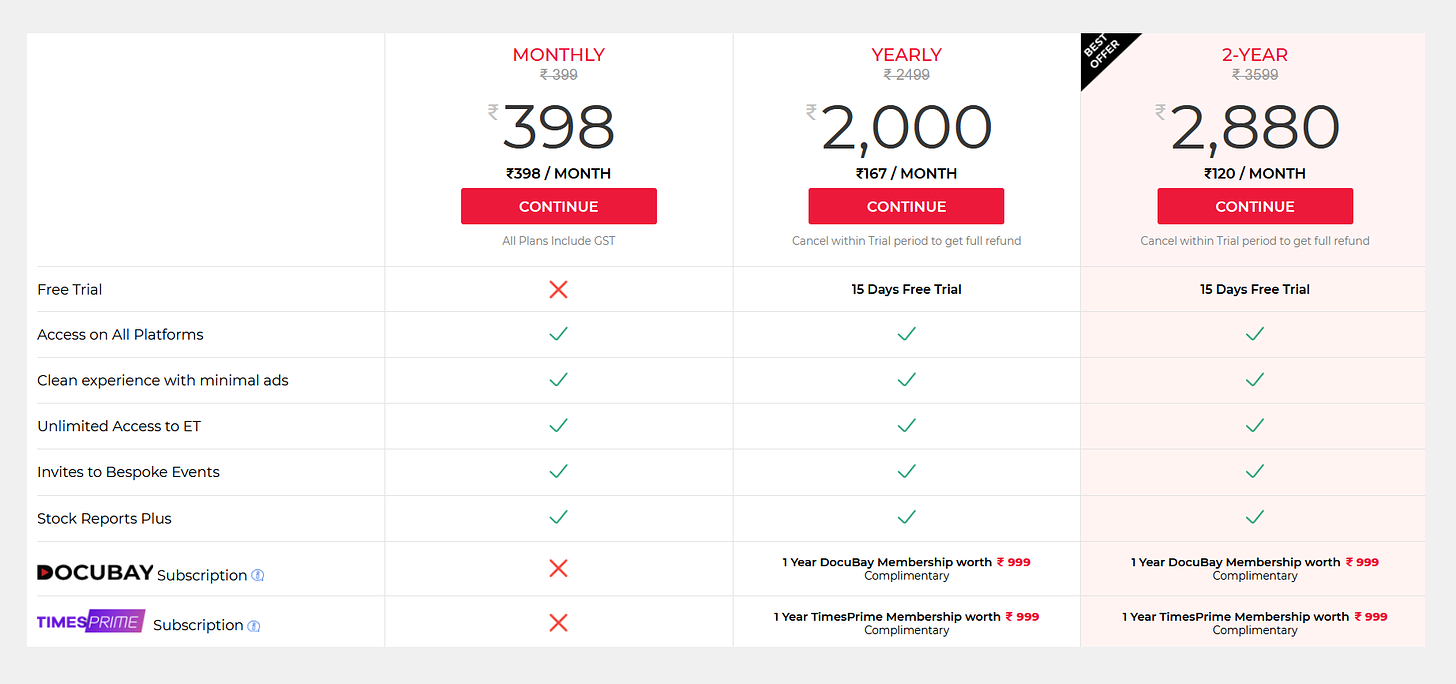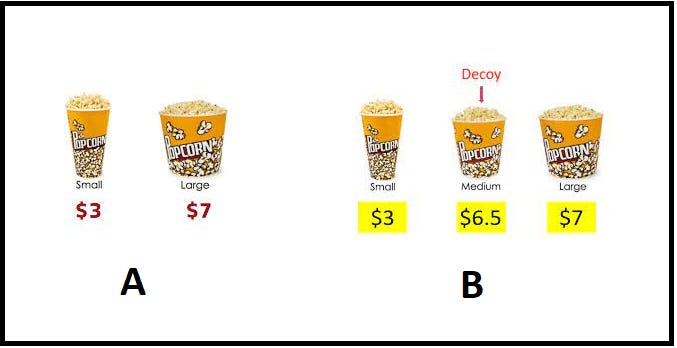1. Decoy pricing
1. Decoy pricing
Dan Ariely & the economist case study 🧧
To understand decoy pricing, let’s take a sneak peek into Dan Ariely's famous book on behavioral economics ‘Predictably Irrational’.
In the book, Dan argues that the human mind can only make sense of relationships and not facts by itself.
When we are confronted with a set of choices, the mind majorly draws a relationship between a set of choices & makes a decision. 😾
To debunk decoy pricing, let us see this economist subscription plan!

Absurd, right! Which one would you choose? Why the hell option 3 offers more value than 2 at the same price? 😐
Dan calls option 2 as decoy introduced to push customers to choose 3rd plan (print + web)! Option 2 is introduced to push more & more customers to buy option 3.
Dan Ariely also proved this empirically. In an experiment he conducted on 100 students at MIT Sloan School of Management — 84 opted for choice 3 (web + print plan) & only 16 opted for choice 1 (web only).
When he removed option 2 i.e. the decoy— only 32 opted for choice 3 (web + print plan) while 68 opted for choice 1 (web only).
💡 Dan also didn’t stop here. He left a practical advise for all of us. 👊 When you are going for a hookup at a bar. Take an identical looking guy with you but make sure that he is a notch less attractive and smart than you. You will see the magic instantly and thank Dan later. 😾 The guy you took with you is the decoy.
ET Prime’s yearly plan is a decoy

Nat Geo’s famous popcorn experiment 🍿
In a famous popcorn experiment, when small and large popcorn was sold at $3 and $7, most customers opted for a small popcorn.
But when a medium popcorn was introduced at $6.5, most customers opted for the large popcorn. The $6.5 medium-sized popcorn (decoy) does the magic in this experiment.
Popcorn experiment!
